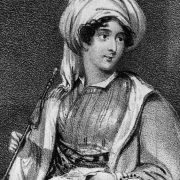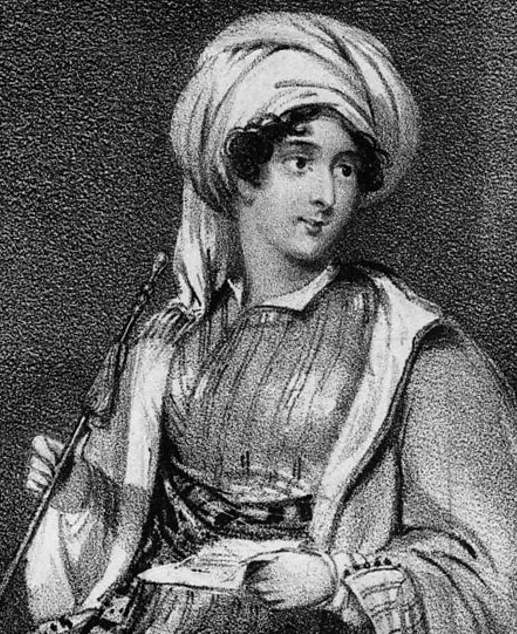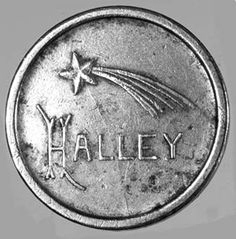MONTHLY BLOG 155, The anonymous author, seeking justified privacy or avoiding responsible transparency?
If citing, please kindly acknowledge copyright © Penelope J. Corfield (2023)

Last month I meditated on the need for fair and intelligent framework regulation for all manner of human activities. We are an ingenious but tricky species. Our best qualities and finest inventions can be used for dire purposes; or can generate malign results in the long run, even if no-one has actually willed such an outcome. Hence the need for clear and intelligent regulation.1
Such thoughts also raise questions about the pros and cons of anonymous writing. It can today be such a scourge. For example, on social media, vituperative hate messages are often sent to families of murdered children. Parents are accused of negligence in leaving their child at risk – or charged with outright complicity in the death. All from anonymous writers who have fierce anger to express, and not even minimal concern for the recipients’ feelings.
Logically, of course, it may even be that – however rarely – such accusations are correct. Children are sometimes murdered by family members. But pointing a finger anonymously, in an outpouring of anger and blame, does not help to identify a malefactor. It makes innocent parents feel worse. And (at a guess) it is likely to make guilty ones even more determined to hide their guilt.
The only ones pleased by such anonymous accusations are presumably the accusers themselves. They can feel, self-righteously, that they have seen the truth; denounced the guilty; and purged themselves of their own distress and anger at the brutal death of a child. Hence, in a world of ever-extending mass literacy, all can have a voice and vent their innermost primal feelings.
But is such a justification good enough? Do not primal feelings also need to operate within a broad (if flexible) set of rules?
So let’s review the case for anonymity. Firstly, it can be an essential shield for the powerless, when seeking to take action against the powerful.2 Whistle-blowers in the workplace, who do not wish to lose their jobs, but who do wish to reveal wrong-doing, often use the cloak of anonymity. Indeed, some organisations today positively recommend having a known channel for such communications to be made secretly and safely; and there are companies that either offer to set up a secure internal hotline or to provide one themselves.3
Similarly, would-be rebellious citizens living under powerful tyrannies may choose to act anonymously against their oppressors. If rebels oppose publicly, they often end up dead or in prison. If they act covertly, they live to continue the fight another day.
Historically, too, there are well-documented cases of anonymous protest. Desperately poor agricultural labourers in early nineteenth-century Britain sent barely literate unsigned letters to local landowners and magistrates, voicing grievances and threatening violence unless remedial action was taken.4 Hence, while anonymous letters are often considered to be written with a ‘poison pen’5 – like anonymous messages on social media today – they can be used to issue challenges to apparently impregnable powers-that-be.
Throughout, however, it’s wise to remember the trickiness of humans. Not all anonymous accusations against powerful – or even tyrannical leaders – are automatically accurate. While anonymity may, be justifiable in specific circumstances, it cannot confer infallibility.
Then there’s a different set of reasons. A considerable number of modest authors want public attention to focus entirely upon their writings, not upon themselves.6 They may be shy, private people. Some too may be acutely anxious.7 They all want to communicate but they want their output to stand or fall upon its own merits.
Moreover, numerous women writers, in the early days of the novel, rightly did not want to be patronised or side-lined because of their sex. As a result, a number first published anonymously, as did Jane Austen – though she did admit to being ‘A Lady’. Others used male pseudonyms. In the mid-1840s, the three Brontë sisters famously first published as Acton [Anne], Currer [Charlotte] and Ellis [Emily] Bell. At least they kept their original initials in full. Marian or Maryanne Evans, who published as George Eliot, had other concerns in mind – saluting her unofficial partner George Lewes by using his first name. The options are endless. It suffices that the ‘pen-name’ is the alter ego, standing forth in the public eye.8
In all cases, anonymous or pseudonymous novelists preserve the capacity to go quietly about their lives – observing the follies and foibles of their fellow humans – without being pestered or pursued by readers. Remaining unknown also safeguards authors from public embarrassment in the event of failure.
Presumably some combination of these motivations inspired numerous male authors to follow the same route. Samuel Leghorne Clemens later flowered as the celebrated American author, Mark Twain. One Marie-Henri Beyle later turned himself into the magisterial French author, Stendhal. The insightful British author, George Orwell, was named by his parents as Eric Arthur Blair – with a first name that he was particularly keen to discard, thinking it too ‘priggish’.
Today, moreover, the successful crime thrillers by the female Spanish author, Carmen Mola, turn out to be authored by not one man but by three, working together anonymously.9 So an element of fun and play may also lie behind the use of pseudonyms. And no doubt an element of private laughter may follow, when the public is successfully hoaxed.
Yet … what about the principle of transparency? What about ‘owning’ one’s actions? Taking responsibility? Standing up to be counted? Playing fair with the public? Preventing false attributions and fake identities? Thoughts on these further burning questions, which haunt the history of publishing and communication, will be the subject of my next BLOG/156 in December 2023.
ENDNOTES:
1 See PJC BLOG/154 ‘In Praise of (Judicious) Regulation’ (Oct. 2023).
2 K. Kenny, Whistleblowing: Toward a New Theory (Cambridge, Mass., 2019); J.R. Arnold, Whistleblowers, Leakers and their Networks: From Snowden to Samizdat (Lanham, Md, 2020); T. Bazzichelli (ed.), Whistleblowing for Change: Exposing Systems of Power and Injustice (Bielefeld, 2021).
3 See e.g. https://www.northwhistle.com or https://www.safecall.co.uk/en/why-safecall.
4 E.P. Thompson, ‘The Crime of Anonymity’, in E.P. Thompson and others, Albion’s Fatal Tree: Crime and Society in Eighteenth-Century England (New York; 1975), pp. 255-308, with sampler of anonymous letters, pp. 309-41. [It’s good to acknowledge here the help in this research given to EPT by his old friend, the local historian E.E. Dodd].
5 E. Cockayne, Penning Poison: A History of Anonymous Letters (Oxford, 2023).
6 See https://en.wikipedia.org/wiki/Category:Works_published_anonymously (viewed 27 Oct. 2023).
7 For meditations on the psychology of anonymity, see E.M. Forster [Edward Morgan], Anonymity: An Enquiry (London, 1925); J. Schecter, Anonymity (London, 2011).
8 https://en.wikipedia.org/wiki/Category:Works_published_under_a_pseudonym (viewed 27 Oct. 2023).
9 They are Jorge Díaz, Agustín Martínez, and Antonio Mercero, three Spanish script-writers: see https://en.wikipedia.org/wiki/Carmen_Mola (viewed 27 Oct. 2023).
For further discussion, see Twitter
To read other discussion-points, please click here
To download Monthly Blog 155 please click here





